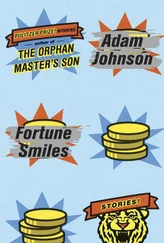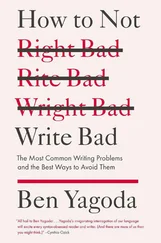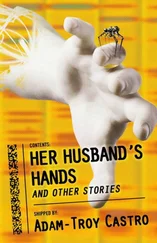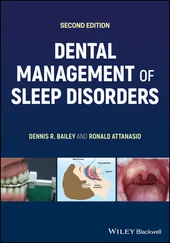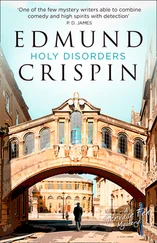His successor studied this commentary carefully and responded with a stack of blank paper: a refusal, based on the wisdom of his predecessor, to comment at all. The stack of paper became known as the Blank Commentary .
His successor, the sage Taku, observed that a blank commentary is still a commentary. It parodied commentary, it abjured commentary, but that was, of course, a commentary of its own. Taku wrote this observation on a piece of paper and then burned himself alive with it, bellowing as the flames incinerated him that he had no commentary of his own to pass on. This is alternatively known as the Fire Commentary or the No-Commentary Commentary.
By now it was becoming clear that the process of ending all commentary would be harder for this little Hokkaido sect than it had originally assumed.
Taku’s successor moved to a big city and sold noodles on the street ( The Noodle-Banality Commentary ). His successor destroyed the sect’s temple and its archive of past commentaries ( The Obliteration Commentary ). His successor was the famed sage Ozaki. Ozaki waited for his own successor to come of age, captured him, gagged his mouth and bound his wrists, locked him in a trunk, and drowned him in the Sea of Okhotsk. For the rest of his life Ozaki roamed the streets of the village with a long sword and a vow to cut the head off any man who interpreted what he had done as a commentary. When he died, his brother told the few villagers who attended his funeral that Ozaki was really a decent and gentle soul who’d adopted this fearsome persona purely to emancipate the sect from the ruinous chain of commentary that had gripped it for so long. This eulogy became known as the Justification Commentary , and Ozaki’s actions were retrospectively called the Emancipation Commentary .
Recent sages have tried alcohol, drugs, and sex. They have pursued normalcy, or silence, or madness. They have published good and bad poetry. Three went into politics, two into finance, two into tech, and one moved to Minneapolis — Saint Paul and was never heard from again ( The Twin Cities Disappearance Commentary ). Still, in spite of their efforts, the tradition of commentary persists. Incidentally, a theologian in Tübingen who is an authority on the sect recently published a paper suggesting that the original ethico-metaphysical text may never have existed in the first place.
…………………….
A philosopher famous for his gnomic aphorisms was found stabbed to death in his Paris apartment. Beside the body his aphorisms were found explained to death. His son, a proponent of clear thinking and clear writing, has confessed to stabbing his father, whom he called an obscurantist, and explaining his aphorisms, in both cases to death. According to Paris police, the son stabbed his father eleven times in the back and then typed up long, lucid explanations of each of his aphorisms. An erudite coroner pronounced both the father and his aphorisms dead at the scene.
…………………….
A father’s fears were vindicated in the worst possible way when his only son — whom he had always admonished for “eating too quickly”—choked to death on a salmon roll at a New York sushi bar. The father immediately set to work on a eulogy. Observing the zeal with which he set about this terrible task, his wife became concerned. Her concerns were vindicated in the worst way when he delivered, to a packed synagogue, a eulogy entitled: “My Son, the Speed Eater.”
31: IN THE HOUSE OF THE CRYPTOPORTICUS
…………………….
Although the plaster casts of Pompeii’s dead, buried alive in the ash of Mount Vesuvius, have furnished archaeologists with a wealth of knowledge about the lives and customs of Roman citizens, one particular pair of immaculately preserved corpses, caught in the extremely narrow underground passageway of the so-called House of the Cryptoporticus, and identified by a consensus of scientists as a father and a son, has inspired only endless debate. Were the father and son trying to squeeze past one another, as some archaeologists believe? Or, as others maintain, was this some sort of embrace, something between a handshake and a hug? The infighting in the latter camp has been, if possible, even more vicious, with one faction deducing from a careful analysis of the arms that the father was initiating a hug while the son countered with a handshake, and another faction, from its own thorough arms analysis, fervently committed to the position that the son was actually going in for the hug while the father reciprocated with a handshake, perhaps anticipating — some in this faction theorize — that the son would find a hug awkward, not realizing — they believe — that the eruption, the prospect of imminent death, had in a sense annulled the old conventions between them and made the son want, quite simply, to hug his father. Yet another contingent, a splinter group of this second faction, agrees that the son here is going for the hug and the father for the handshake, but claims to see signs that if the ash had caught them a moment earlier we would have seen the reverse: father going for the hug, son going for the handshake. The embarrassing failure of that embrace caused each party, these archaeologists contend, to abruptly and clumsily adopt the other’s strategy — i.e., handshake for father, hug for son — and this just happened to be the position they were in when the burning ash buried them and they were immortalized.
Giuseppe Fiorelli, the astute Italian archaeologist who produced their plaster casts in 1863, was, incidentally, one of those who believed the two figures were simply trying to squeeze past one another, in order to escape from the House of the Cryptoporticus. He was not even convinced the two were related, or that they were men.
…………………….
At an upscale Italian café on the Upper West Side, a father found himself in the peculiar position of trying to persuade his son that some things could be known with certainty, beyond a shadow of a doubt, and he gave as an example the fact that they were right now drinking cappuccinos together at an Italian café on Columbus Avenue, near Eighty-Third Street. That’s something that we can both know with certainty, said the father — a starting point for us. But the son refused to admit even this much, since one, or both, of them might be a brain in a vat. Even after his father had paid for the (expensive) cappuccinos, the son would not admit that they had necessarily drunk anything together, much less cappuccinos, since either of them, or both of them, might be in vats, he said, and they left the café in silence.
It so happens that the son’s skepticism is not unwarranted: he actually is a brain suspended in a vat, tended to by a scientist who feeds it electrical impulses that conjure up whole illusory worlds. The father-son conversation just reported, which supposedly took place at Tarallucci e Vino on Columbus and Eighty-Third, really occurred solely within the synapses of the son’s floating brain. The scientist keyed in “philosophical debate about the possibility of knowledge” and “rustic, refined Italian café,” and voilà.
Next, the scientist keyed in “cathartic embrace” and “unpretentious clam shack” and “southern Maine” and the son’s brain believed he was hugging his father in Kittery.
The really sad thing — besides, I suppose, the delusions, dimly surmised, of this disembodied brain — is that the mad scientist’s father, himself a retired physician, lives literally right around the corner, yet they hardly see each other at all. The father believes that his son is conducting all kinds of important brain experiments and has no interest in hanging out with his old man. He would be surprised — this is putting it mildly — to learn that his son actually uses his brain-in-a-vat to simulate thousands of encounters between fathers and sons, in every possible permutation. Why the mad scientist would rather simulate these father-son encounters than experience them firsthand is an open question, one that he’s currently trying to answer through his simulations.
Читать дальше

